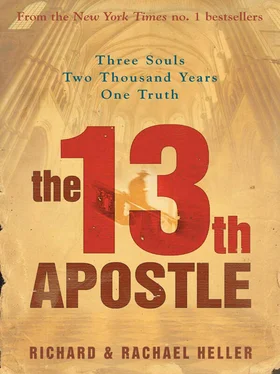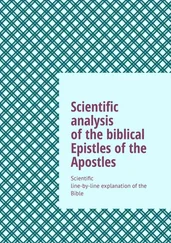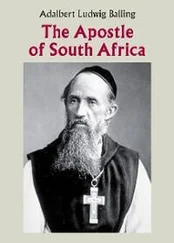Richard Heller and Rachael Heller
The 13th Apostle

This novel is entirely a work of fiction.
The names, characters and incidents portrayed in it are
the work of the author’s imagination. Any resemblance to actual
persons, living or dead, events or localities is entirely coincidental.
AVON
A division of HarperCollinsPublishers
1 London Bridge Street
London SE1 9GF
http://www.harpercollins.co.uk
A Paperback Original 2007
THE 13TH APOSTLE. Copyright © Dr Richard Heller and Dr Rachael Heller 2007. All rights reserved under International and Pan-American Copyright Conventions. By payment of the required fees, you have been granted the nonexclusive, nontransferable right to access and read the text of this e-book on-screen. No part of this text may be reproduced, transmitted, downloaded, decompiled, reverse-engineered, or stored in or introduced into any information storage and retrieval system, in any form or by any means, whether electronic or mechanical, now known or hereinafter invented, without the express written permission of HarperCollins e-books.
Richard and Rachael Heller assert the moral right to be identified as the author of this work
A catalogue record for this book is available from the British Library
ISBN-13: 9781847560407
Ebook Edition © September 2008 ISBN: 9780007236909
Version: 2018-05-17
The 13 thApostle is a work of fiction. Names, characters, places, and incidents either are the product of the authors’ imaginations or are used fictitiously, and any resemblance to actual persons, living or dead, business establishments, or organizations, events, or locales is entirely coincidental.
As each character, organization, or institution is either fictional or portrayed in a purely fictional manner, the perceptions, beliefs, motivations, actions, beliefs, portrayals, and histories of each character, organization, or institution should be considered products of the authors’ imaginations and should not be construed as reflecting any aspect of reality. In the same way, character’s perceptions, motivations, actions, beliefs, and histories do not, in any way, reflect the perceptions, motivations, actions, beliefs, or histories of any organization or institution, nor do they reflect the perceptions, motivations, actions, beliefs, or histories, of any character’s religious, ethnic, racial background, affiliation, or national origin.
To Charles D. Besford,
For his fine mind, caring heart,
and generosity of spirit.
Cover
Title Page
Dedication
Prologue
One
Two
Three
Four
Five
Six
Seven
Eight
Nine
Ten
Eleven
Twelve
Thirteen
Fourteen
Fifteen
Sixteen
Seventeen
Eighteen
Nineteen
Twenty
Twenty-One
Twenty-Two
Twenty-Three
Twenty-Four
Twenty-Five
Twenty-Six
Twenty-Seven
Twenty-Eight
Twenty-Nine
Thirty
Thirty-One
Thirty-Two
Thirty-Three
Thirty-Four
Thirty-Five
Thirty-Six
Thirty-Seven
Thirty-Eight
Thirty-Nine
Forty
Forty-One
Forty-Two
Forty-Three
Forty-Four
Forty-Five
Forty-Six
Forty-Seven
Forty-Eight
Forty-Nine
Fifty
Fifty-One
Fifty-Two
Fifty-Three
Fifty-Four
Fifty-Five
Fifty-Six
Fifty-Seven
Fifty-Eight
Fifty-Nine
Sixty
Sixty-One
Sixty-Two
Sixty-Three
Sixty-Four
Sixty-Five
Sixty-Six
Sixty-Seven
Sixty-Eight
A Conversation With the Authors
Acknowledgments
About the Author
Copyright
About the Publisher
Among the most sacred of texts it is written:
In each generation there are born thirty-six
righteous souls who, by their very existence,
assure the continuation of the world.
According to Abraham’s Covenant, once each
millennium, God shall return to earth and count
among the many, those who remain righteous.
Were it not for these tzaddikim, the righteous ones,
who stand in God’s judgment, mankind’s fate would
be in grave and certain peril.
These tzaddikim have no knowledge of each other;
neither have they an understanding of their own
singular importance. As innocents, they remain
unaware of the critical consequences of their
thoughts, their faith, and their deeds.
Save for one.
To this tzaddik alone, is the granted knowledge
of his position, for to him is entrusted the
most sacred of tasks.
Six months ago, London
Professor Arnold Ludlow opened the ancient diary. The musty smell filled him with excitement. This was the manuscript that had eluded him for four decades, its existence supported by a few obscure references and unsubstantiated rumor. Still, he had not lost faith. Now he held it in his hands and translated, from the Latin, the words of one long dead.
The Courtyard of Weymouth Monastery
The First day of May 1097
There was no stake onto which the monks might secure the prisoner, so Father Abbot John gave orders that the heretic be tied to the great elm. The tree was half-dead, having been struck by lightning last spring. One half of the trunk had turned to dry, brittle wood and would provide a quick hot flame at the start. The other half had exploded with new green growth and would now ensure a constant renewal of the flames of salvation. With the application of enough oil to the dry wood, the fire would burn steadily enough to allow the prisoner to renounce his heresies and so, at the last moment, snatch his soul from the waiting hand of the devil.
With the conclusion of evening vespers, novice-master and three novitiates fetched the prisoner from his cell. The heretic walked among them, head held high, eyes forward. He did not protest as others had; neither did he beg for mercy.
Under the watchful eye of their instructor and the monastery’s full register of monks—more than a score in all—the three novitiates bound the heretic to the tree, hand and foot. Each took a turn, loosening the coarse jute, then pulling it taut. With every tightening, small pieces of flesh were torn from the prisoner’s wrists and ankles, leaving small rivulets of red in their wake.
The other monks drew closer and watched in silence. From time to time, each nodded his approval and, in solemn tones, expressed his hope for the heretic’s repentance. Yet, even, as they watched the novices secure ropes around the prisoner’s neck, waist, then across his groin, their breathing quickened. Although weighted down by heavy robes, Brother Jeremiah, the youngest of the monks, appeared to be greatly aroused.
At novice-master’s nod, each of the monks, in turn, made his way to the shed and returned with a large bundle of faggots so that each, by his contribution, might share in the glory of the redemption.
The parcels of sticks were placed carefully around the feet of the heretic, then piled high to his waist. The packing of the wood was critical. If faggots were too lightly mixed with straw, the fire might go out, requiring a second or third attempt; wood too densely packed would produce a fire so hot that it might bring too rapid a surcease of pain. Much practice and skill was required in order to produce the perfect flame with which to burn a man alive.
And still the prisoner stood motionless.
Читать дальше













